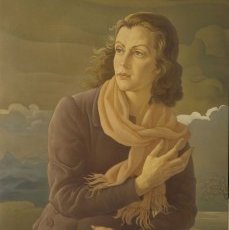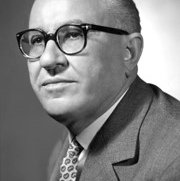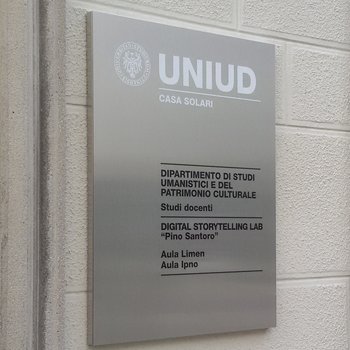Casa Solari
DIUM

Department of Humanities and Cultural Heritage
Casa Solari
Vicolo Florio, 4 – 33100 Udine
Telephone: +39 0432 556443
Department of Humanities and Cultural Heritage
Casa Solari
Vicolo Florio, 4 – 33100 Udine
Telephone: +39 0432 556443

The earliest certain records relating to this secluded building, which lies in the shadow of the impressive Palazzo Florio, date back to 1632, in connection with the adventures of two leading personalities of Udine, the brothers Brandimarte and Francesco Belgrado. At that time the two, which had just led the city army against the Emperor in the so-called Monferrato War of SuccessionG.F. Palladio degli Olivi, Historie della provincia del Friuli, vol. 2, Udine 1660, 289 d., decided to sign over to the Coronella familyIn their general report of the maintenance project of the building (Relazione generale del progetto esecutivo per la manutenzione straordinaria di un edificio sito in Vicolo Florio, page 1), the architects Federico Toso and Christiano Sacha Fornaciari misunderstood the dynamic of the sale: in this case the Belgrado family are without any doubt the sellers, the Coronella family the buyers, and Antonio Mattioli – whom the two mistaken for the purchaser – was actually the notary who registered the deed, as evidenced by the words used by della Porta (cf. V. Masutti [ed.], Memorie su le antiche case di Udine di Giovanni Battista della Porta, vol. 1, Udine 1987, s.v. 913, digital edition edited by A. Frangipane), which refer to a notarial document – "instrumento" – written in his own hand. a house with a yard and garden between the huge park belonging to the Count Giulio Del Torso and the stables of the aristocratic Florio family, who also gave the name to the neighborhood where it was located, Contrada FloriaIn his manuscript, della Porta mentions a further garden ("horto") passed from the Belgrado to the Coronella, more precisely a plot which in 1643 was behind the house of the latters. Curiously enough, though, this second garden was not located in Contrada Floria, as would be expected, but in a narrow street called androna Torsa or Porta di Santa Maria – which was an alternative name for the city gate Porta Torriani (see Memorie su le antiche case di Udine, s.v. 913). Due to the fact that the very same families were involved also in this sale and to the recurring mention of a garden lying close to the city walls, not just della Porta, but Masutti and Frangipane too believed that this last garden had to be the same pertaining to our building. Yet the explicit reference to the neighborhood of Santa Maria (corresponding to today's via Marinoni and via Zanon) makes me think that this should not be the case: the Coronella must have also bought from the Belgrado family another property. This suspicion finds confirmation in that mentioned by the neighbours of the second "horto", among which we find the Arrigoni family: the Arrigoni at the time did not dwell nearby the Church of San Cristoforo and Contrada Floria, they lived rather close to Porta Torriani, cf. G.B. della Porta, Memorie su le antiche case di Udine, s.v. 704..

The building (in red) with respect to the positions of the current Palazzo Florio (Nr. 914) and the Church of San Cristoforo, as drawn in the Lavagnolo Map (1843–1850)
The Coronella, however, only kept this property for twenty years and, on 5th July 1657, they sold it to Gio Batta Mantica, Knight of the local Senate and Deputy for the City of Udine. Since then the house remained in the hands of the Mantica family for more than a century. During this long period, its structure does not seem to have been significantly altered: in 1774 it was described as a complex with a house, yard and garden, perhaps enriched by the mere addition of a storage area. Anyway, the surrounding area had changed a lot. Little by little the Florio family, who were already owners of the stable next to our building, as well as of many buildings on the opposite side of the roadIvi, s.v. 914, succeeded in buying various plots which were previously held by the Del Torso family, so that their current property by then abutted the building on the North, East and West. It comes thus as no surprise to discover that, as soon as the Mantica family decided to sell it in order to move nearby to the Cathedral, it was the Florio family who offered 5500 ducats for the purchase (25th September 1782)Ivi, s.v. 913..
So, the house became an integral part of the family's heritage and it was intended for lease. Documents show a series of tenants' names, unfortunately for the most unknown, among which we could be reminded of Niccolò de Marco (1801)Ibid. and the luggage manifacturer ("bolzaro") Giovanni Ferirlo (1809)Ibid..
There are no real records of structural modifications of the building. However, it can be estimated that, around 1920See Relazione generale (cf. footnote 1), 1., a rearrangement was commissioned, which dramatically changed its appearance and transformed it in the edifice that (with the exception of some very recent interventions) can be seen today: two independentIbid. but adjacent constructions were incorporated into a main structure with three floors (plus an attic and basement). Internally it was connected to a secondary building, probably an old private chapel converted into servants' quarters. The yard and an annex used as laundry rooms were accessible through a side portico with four arches (currently closedIvi, 3.).

The portico and the yard today. In the background, access to the laundry.
A private entranceIvi, 1–2. led instead to the upper floors, which hosted one separate apartment each. Such an internal arrangement of spaces allowed the Florio family to better differentiate their destination: the ground floor, which opened directly onto the street, was meant to accomodate commercial activities and places for pleasure seekers – in 1940 it was frequented by the customers of the tavern "Al Montenegrino"G.B. della Porta, Memorie su le antiche case di Udine, s.v. 913. Lucia Burello (Osterie dentro le mura di Udine tra il Quattrocento e i giorni nostri, Monfalcone 1998, 101–102) believes that the building had hosted also the tavern (later a restaurant) Florio, where it was possible to drink the wine produced by the Counts themselves. In the 1930s the tavern was a lively meeting place for many personalities of the local microcosm, for example the poet Enrico Fruch. In Burello's opinion, ten years later the restaurant would have been replaced by the tavern Al Montenegrino. On what basis is she persuaded by this reconstruction, remains unclear, because she did not provide any specific reference. Besides, in that very same road, Vicolo Florio, in those very same years there was for sure at least another tavern, at the number 1 – that is to say, in a room inside Palazzo Florio (Lucia Burello mentions this at page 167). Thanks to the contribution of Mario Quargnolo, the enigma can be solved: in his book Caffè e osterie di Udine (page 90) he published an old picture of the tavern/restaurant Florio. The room with an arched wall and exposed wooden roof beams is beyond any doubt the current Sala Florio, which is located in the Palazzo of the same name. Any connection with Casa Solari must therefore be excluded.; the apartments above were on the contrary secluded, and therefore more suitable for residential purposes. It was exactly one of these which, in the second post-war periodWe do not know the exact date, but Fermo stayed in Milan until the end of the War, see M. Tosoni (ed.), Fermo Solari. Essere di sinistra, Udine 1993, XXXVI–XXXVII., became the residence of Bianca and Fermo Solari.
Descended from two deep-rooted Friulian lines – her ancestors were heroic patriotsSee the self-published volume Tra storia e memoria. Immagini e documenti raccolti da B. Marini Solari, Udine 1990., his were master clockmakersThe clock factory Premiata fabbrica Fratelli Solari – Pesariis (Udine) seems to have been established back in 1725, cf. M. Tosoni (ed.), Fermo Solari. Dirigente della Resistenza, uomo politico, industriale friulano, Udine 1988, 13–17, especially 15. –, they both fought on the front line against FascismBianca was a partisan dispatch messenger, Fermo became Commander of the Corpo dei Volontari della Libertà (Corps of Volunteers for Liberty), the armed wing of the Italian resistance movement, in November 1944 and kept this position until the Liberation, cf. M. Tosoni, Fermo Solari. Essere di sinistra, XXXVI–XXXVII.. At the end of the war they did not quench their thirst for social justice, therefore they participated actively to the building of the new Republic of Italy, on several levels. On the political front, Fermo became first member of the Consulta Nazionale (National Council), then Senator for the Italian Socialist Party (PSI). In this capacity he fought passionately to achieve the territorial autonomy of Friuli, a necessary step for the economic recovery of a region still heavily marginalised and backwardSee the speech "Decentramento economico, autonomia territoriale", in M. Tosoni, Fermo Solari. Essere di sinistra, 38–52., and to promote the so-called "terza via" ("Third Way") between pure liberalism and Soviet Socialism – a system capable to defend both the free economic initiative and the most vulnerable social groups through a fair distribution of wealthSee the pamphlet "Per una democrazia socializzata", in M. Tosoni, Fermo Solari. Essere di sinistra, 5–21..
This social obligation was not at all limited to mere words. Bianca and Fermo did much for achieving the equality in which they so strongly believed. The whole city community (and more) benefitted greatly from their generosity, by receiving the gifts of artworks and equipment for the City Library, the University and public schools. For deserving students they provided financial aid through scholarshipsM. Tosoni, Fermo Solari. Dirigente della Resistenza, uomo politico, industriale friulano, XVI. See also the articles "Compie 101 anni Bianca Marini, vedova del senatore Solari" appeared on Messaggero Veneto on January 25th 2010, page 8, and "Cordoglio della città per la morte di Bianca Marini Solari", by A. Ceschia (Messaggero Veneto, 23th February 2013, page 22).; employees of Fermo's factory were offered the free distribution of preferred sharesM. Robiony, F. Bof, Il tempo di Solari, Udine 2014, 35–37., and a Foundation was established in order to channel the interests on capital gains into initiatives in their favourM. Tosoni, Fermo Solari. Dirigente della Resistenza, uomo politico, industriale friulano, XVI–XVII.
Speaking of business, the R. Solari & Co. Company (today Solari di Udine) can be considered as one of the major highlights of his multifaceted career: founded in 1948 and flourished thanks the successful combination between Fermo's business skills and the ingenuity of his brother Remigio, the company soon became – and still continues to be – a world-class excellence in the production of flap clocks, displays and remote-controlled indicator systems. What made the difference were on one side the high quality of the products, on the other their aesthetic appeal. Thanks to this balance between functionality and beauty, R. Solari & Co. obtained several prestigious recognitions, both formally (the company was awarded twice with the Compasso d'oro award, in 1956 and 1962, once with the Mercurio d'oro in 1963, and one of the clock produced, the Cifra 3 model, has been in the permanent collection of MoMA since 1976Ivi, 38–43.) and in more unconventional, but nonetheless flattering forms: many fans of Tom Hanks and Steven Spielberg will probably have noticed, in numerous scenes of the comedy The Terminal, airport notice boards with the "Solari" logo peeping out from the background. The Oscar-winning director himself wanted them to be assembled on setIvi, 38–43..
Such a wholehearted commitment in so many areas – from politics to culture, from social engagement to enterprising success – and such great achievements could not be overlooked. In 1963 Fermo Solari was given the highest ranking honour of the Republic, the title Knight of the Grand Cross (Cavaliere di Gran Croce al merito della Repubblica Italiana)Ivi, XVI–XVII; M. Tosoni, Fermo Solari. Essere di sinistra, XXVIII..
Left a widow in 1988, Bianca continued living in the same house until the University purchased it. Her affection for that part of Udine remained however so strong, that she kept coming back to it with her small car, in order to meet her old friends and engage in interesting conversations with the studentsSee the letter "L'università le dedichi quel palazzetto" signed by Marina De Paoli, Anna Pellegrino and Silvana Schiavi Fachin (Messaggero Veneto, 23rd February 2013, page 22)..
In homage to this bond and in deference to the intellectual and moral stature of these last two tenants, which promoted with such great passion the vision of a democratic, progressive and egalitarian societySee Da un vecchio friulano ai suoi giovani conterranei, in M. Tosoni, Fermo Solari. Dirigente della Resistenza, uomo politico, industriale friulano, XXIV. (both Italian and EuropeanSee the pamphlet Per una democrazia socializzata, in M. Tosoni, Fermo Solari. Essere di sinistra, 20–21.) based first and foremost on cultural values, The University of Udine named the building after them, entitling it "Casa Solari" (House Solari).
Today Casa Solari hosts the offices of some professors and researchers of DIUM, as well as Aula Limen and Aula Ipno, two rooms pertaining to the Digital Storytelling Lab.
Text by Sara Marmai, Ph.D. candidate in Papyrology at the Universität Trier.









